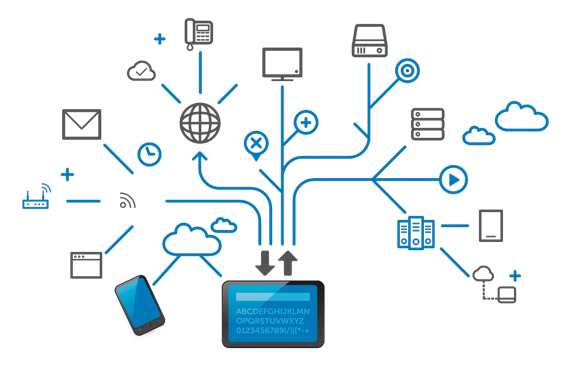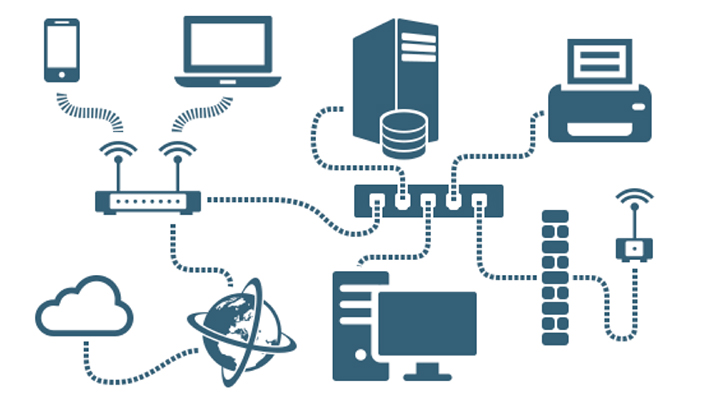Connectivity needs for huge companies and enterprise are entirely different compared to regular consumers. There are certain aspects that are critical and capabilities that need more attention. ??Requirements such as CIR (committed internet rate), guaranteed uptimes (99.95% uptime guarantees) are all part of a comprehensive SLA (service level agreement) that puts emphasis on a lot of other factors on top of speed of connectivity.

Since the 70’s, the main interconnectivity option for companies with multiple branches or offices is via a leased line. This provides connectivity to all the offices, allowing each branch to talk to each other, access applications housed in the main office, as well as give them a secure and private interconnection. Until now, private leased lines are still used by many despite the relatively high cost of deploying a WAN (Wide Area Network), its lengthy provisioning time, its complex operation and maintenance, not to mention the guaranteed bandwidth.
The second wave of enterprise solutions spanned a couple of decades which includes ATM (asynchronous transfer mode), Frame Relay, MPLS (multiprotocol label switching), and IP VPN (Internet Protocol Virtual Private Network). These various WAN requires specific hardware components provided by network providers and have their own strengths and weaknesses ranging from ease of deployment, management, added functionality, network security, and cost considerations.

Currently, delivery of business applications is becoming complex for enterprises. Businesses now demand richer applications, cloud solutions and services, thereby consuming higher bandwidth. Current network architectures are struggling to keep up with exponential bandwidth requirements, ensuring optimum uptime and protecting against security threats all at the same time.
There’s two ways to meet the demands of the ever-growing network requirements. On one end you can deploy an MPLS network that supports a various range of access technologies like DSL (Digital Subscriber Line), ATM, and Frame Relay. This has the features that a corporate data network requires like dedicated bandwidth and guaranteed uptime. However, deployment of such a network is time consuming, and requires close coordination with a network provider to ensure seamless activation.

On the other hand, a VPN solution can be easily implemented using broadband connectivity that doesn’t require significant configuration changes. However, it can be a challenge if deployed in a complex network with constantly changing environments. Although it offers flexibility and is more cost efficient than other options, it’s most suitable for basic networking requirements.
In order to bridge the gap between the performance and stability of an MPLS or leased line and the cheaper option with VPN, a Software Defined WAN (SD-WAN) solution was developed in 2014.
SD-WAN can utilize multiple types of network connectivity and interlink them simultaneously to create a resilient and robust corporate data network. This in turn allows the network group of your company to choose the most efficient and/or cost-effective method to interconnect multiple branches which are spread across geographically dispersed locations.
“SD-WAN is a software based solution to simplify delivery of WAN services and network operations. It can be deployed on a hybrid IPVPN, Direct Internet, or broadband connectivity to provide multiple connectivity options. As such, it simplifies the deployment of customer branches by providing connectivity when and where it is needed.”
For example, enterprises with multiple sites that require connectivity can leverage on an SD-WAN solution. Each branch that needs to connect to the central office can use multiple network transport options (DSL, leased line, IP-VPN, etc). SD-WAN can utilize all of these network transport and dynamically determine what type of traffic can pass through– ensuring the best path for connectivity and thereby assuring optimum location, availability, and resiliency.
The SD-WAN’s value revolves around simplifying delivery of network service and operation via software-deployed central management servers. Change management across the corporate network requires only a change to a single policy and can be deployed across the network.
In summary, here are the main reasons why there is a need to shift to SD-WAN:
Coincidentally, Globe Business launched the first SD-WAN service in the country yesterday.

“We continue to modernize and expand our corporate data network, ensuring that it is future-ready to offer businesses the services and solutions they need even in remote areas in the country. SD-WAN revolutionizes how corporate data networks in the Philippines are defined. It would enable us to reach places we’ve never been before, capitalizing on both our broadband and corporate data network,” said Gil Genio, Globe Chief Technology and Information Officer.
Globe has shown proof-of-concept as to the value and efficiency of migrating to SD-WAN. This is a pioneering effort by Globe to reach more enterprise customers in the Philippines.

YugaTech.com is the largest and longest-running technology site in the Philippines. Originally established in October 2002, the site was transformed into a full-fledged technology platform in 2005.
How to transfer, withdraw money from PayPal to GCash
Prices of Starlink satellite in the Philippines
Install Google GBox to Huawei smartphones
Pag-IBIG MP2 online application
How to check PhilHealth contributions online
How to find your SIM card serial number
Globe, PLDT, Converge, Sky: Unli fiber internet plans compared
10 biggest games in the Google Play Store
LTO periodic medical exam for 10-year licenses
Netflix codes to unlock hidden TV shows, movies
Apple, Asus, Cherry Mobile, Huawei, LG, Nokia, Oppo, Samsung, Sony, Vivo, Xiaomi, Lenovo, Infinix Mobile, Pocophone, Honor, iPhone, OnePlus, Tecno, Realme, HTC, Gionee, Kata, IQ00, Redmi, Razer, CloudFone, Motorola, Panasonic, TCL, Wiko
Best Android smartphones between PHP 20,000 - 25,000
Smartphones under PHP 10,000 in the Philippines
Smartphones under PHP 12K Philippines
Best smartphones for kids under PHP 7,000
Smartphones under PHP 15,000 in the Philippines
Best Android smartphones between PHP 15,000 - 20,000
Smartphones under PHP 20,000 in the Philippines
Most affordable 5G phones in the Philippines under PHP 20K
5G smartphones in the Philippines under PHP 16K
Smartphone pricelist Philippines 2024
Smartphone pricelist Philippines 2023
Smartphone pricelist Philippines 2022
Smartphone pricelist Philippines 2021
Smartphone pricelist Philippines 2020
Jon Ferrer says:
Sales Pitch. Anyways, CIR is Committed Information Rate.